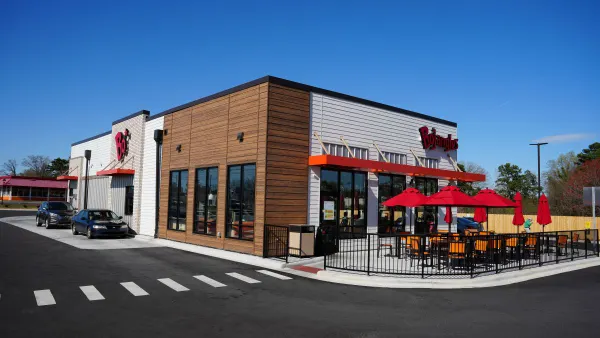As we enter year three of the pandemic, restaurants are still experimenting with the perfect recipe for boosting customer traffic and profits. Yet one subsection of the industry made it through these tumultuous years largely unscathed: pizzerias.
From national chains to local shops, many pizza merchants survived — and even thrived — during the pandemic. In fact, two of the biggest names saw their revenue increase almost 12%[1]. Waze data shows similar results, with pizza chains garnering higher organic navigations for restaurant visits than most of its competitors in the dining category[2].
The forecast remains strong for 2022, with one restaurant trends research firm predicting a growth rate of 4.84%[3]. "This myth that everyone ordered pizza four times a week during the pandemic and now they won't do that coming out of the pandemic just isn't factual. It's been all new customer acquisition driving growth," says Rob Lynch, Papa John's CEO[4].
How can restaurant marketers of any culinary specialty duplicate this growth? Here are some insights into the secret sauce that helped pizza restaurants succeed.
1. Optimize digital ordering
Major pizza chains have easy-to-use apps, making it a breeze to go from seeing an offer to ordering in a few clicks. In fact, one survey found that "easy ordering" was the No. 1 "must have" consumers looked for in a restaurant app[5].
That's a key strategy restaurants should emulate to gain market share, and many restaurants have been eager to get ahead of the curve, including Waze's client El Pollo Loco. "We had intended to release our app update in late 2021, but a cross-functional team prioritized its deployment, and we were able to get it up and running in our locations within six weeks," says Andy Rebhun, El Pollo Loco's Vice President of Digital[6].
For a best-in-class experience, restaurants should include advanced functionalities, such as integrated loyalty programs and order-ahead capabilities, that can influence driver behavior.
2. Emphasize convenience
Pizza is widely regarded as one of the most convenient meal options for a busy schedule. While it's a crowd-pleaser in and of itself, it's also affordable, fast and low-effort and is one of the original cuisines synonymous with takeout and delivery.
Even if your fare is a little more complicated, there are ways to streamline the experience. "Brands should focus on reducing any perceived barriers to visiting their location, which is especially important as they seek to combat the profit hit from third-party delivery," says Mike Wilson, Waze's Head of Industry, Restaurant. "We recommend they consider dedicating a budget to promoting the convenience and expediency of their offerings."
He cites solutions from Waze Ads, such as Location Personality badges – which alert nearby drivers to drive-thru and takeout options – and Takeovers that highlight offers for budget-minded consumers. Using a medium like Waze that allows for frequent changes means restaurants can easily and quickly update their messaging to reflect temporary specials or revised hours.
3. Cultivate community
With their casual vibe, local pizza shops often become natural hangouts for groups like families, teens and club members. Their stature in the community and this association with parties and good memories makes them less likely to be forgotten in tough times.
Restaurants can take a page from this playbook by forging relationships with local sports teams, businesses, schools and other groups. Volunteer to host a fundraising night or create a party room where groups can comfortably congregate. Promoting community bonds can be a powerful grassroots way to boost brand favorability and remain top-of-mind as a gathering place for any occasion.
4. Promote customization
Whether choosing a menu for a game day gathering or a family movie night, pizza has earned a go-to reputation because of its flexibility. Topping choices are nearly limitless, and most pizzerias allow patrons to customize half pies so everyone in the group can get what they want. Many pizza places also provide options that meet various dietary needs and preferences, such as vegan offerings and gluten-free crusts.
As wellness increasingly becomes an integral component of consumer lifestyles, restaurants should focus on promoting healthier options that ensure diners can find tasty meals that meet their family's dietary needs and preferences. Wilson suggests restaurants make it simple for patrons to customize their meals through digital apps or in-location kiosks that let them easily substitute or add ingredients.
Slice through the clutter with Waze advertising solutions
Pizza advertising works because it's ubiquitous, but many restaurant marketers find quality can be just as important as quantity. As consumers are bombarded with messages, they're less likely to engage with communication that doesn't address their most immediate needs. That's where Waze's difference is clear, Wilson says. "We give restaurant marketers the opportunity to reach on-the-go drivers at the moment of decision — exactly when it matters most."
[1] "Pizza Was the Restaurant Hero of 2020." New York Times, 12 February 2021, URL. Accessed 6 February 2022.
[2] Waze data, 2022.
[3] "Pizza Market size to increase by USD 42.20 Mn| Technavio's Research Insights highlight the Increasing Consumption of Pizza in Developing Countries as Key Driver." Yahoo.com, 11 November 2021, URL. Accessed 6 February 2022.
[4] "One year in, COVID-19 pandemic continues to impact independent restaurants." Restaurant Hospitality, 15 March 2021, URL. Accessed 6 February 2022.
[5] "Restaurant app use rising, consumers ordering less." QSRWb.com, 4 October 2021, URL. Accessed 6 February 2022.
[6] "Successful restaurants put tech innovation on the menu." Waze, URL. Accessed 6 February 2022.










